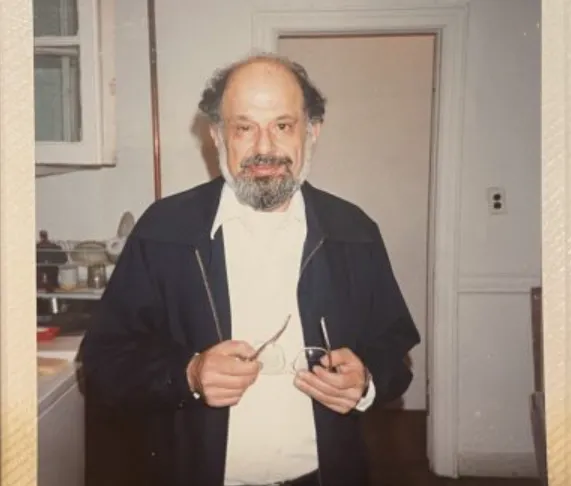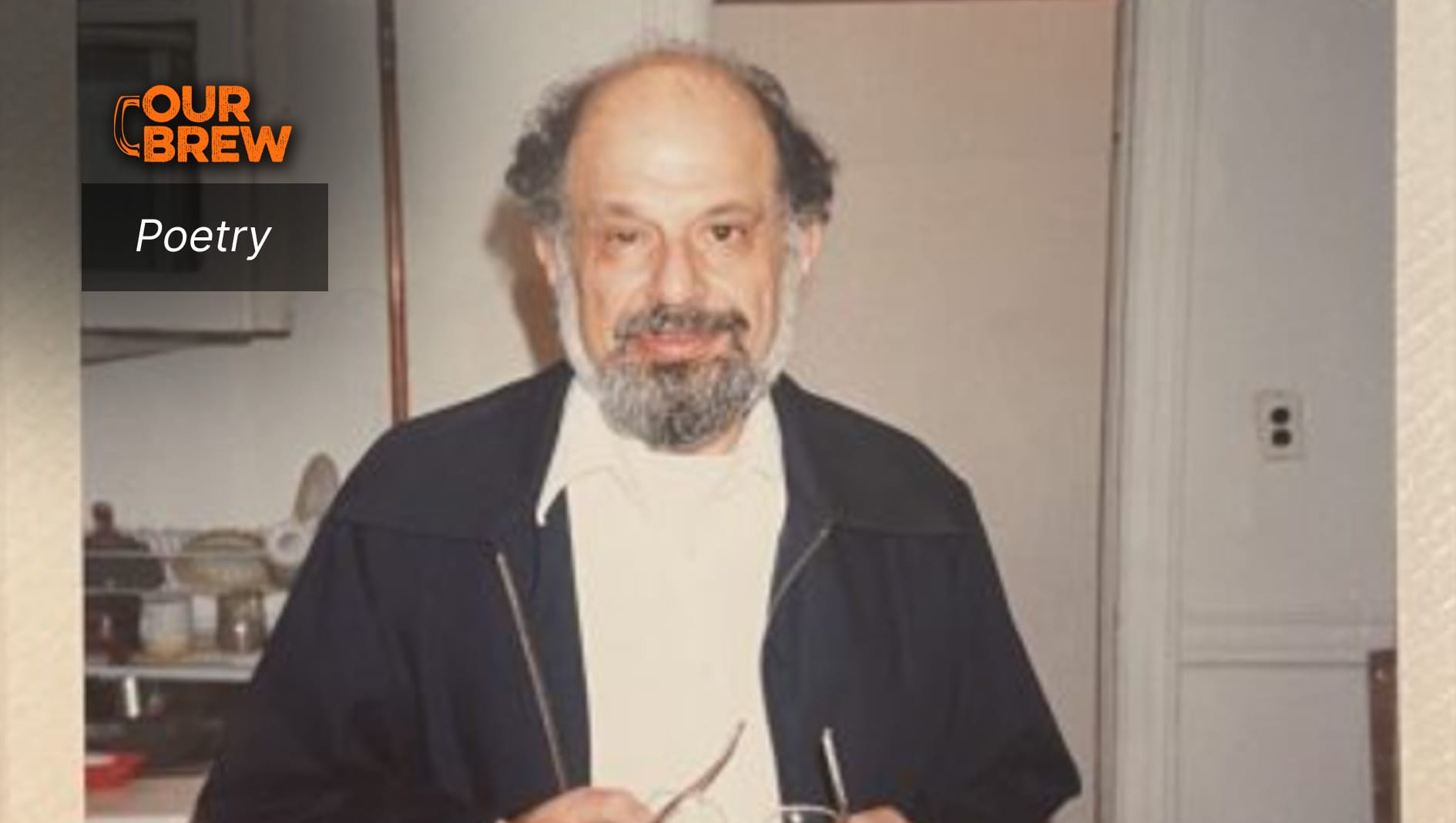
By Laurie Udesky and MindSite News.
Best Minds: How Allen Ginsberg Made Revolutionary Poems from Madness. Stevan Weine, MD. Fordham University Press
The celebrated Beat poet and counterculture icon Allen Ginsberg was hurled into the spotlight in 1956 with his epic poem “Howl.” It was written for his friend Carl Solomon, whom he met in 1949 at age 23 in the waiting room of the New York State Psychiatric Institute. The poem famously begins, “I saw the best minds of my generation destroyed/by madness, starving hysterical naked” – a reference reflected in the title of Stevan Weine’s new book about Ginsberg, entitled Best Minds: How Allen Ginsberg Made Revolutionary Poems from Madness.
Weine, MD, a professor of psychiatry at the University of Illinois College of Medicine, became enamored with Ginsberg’s poems as an 8th grader. His curiosity about his poetry and how it might be connected to his experiences of madness – and the madness of Ginsberg’s mother – led Weine to reach out to the writer in April 1986, the first of several encounters over an 8-year period.
In Best Minds, Weine analyzes Ginsberg’s poetry, explores his many interactions with him and provides his own reading of the detailed clinical notes of the psychiatric hospitalizations of Ginsberg and his mother, which capture the barbaric nature of psychiatry in that period. They reveal the heavy reliance on lobotomies, for example, to “treat” severe mental illness. The notes also traced how psychiatrists of that time believed that being gay – as Ginsberg was – was a sociopathic personality disturbance. Gayness was also condemned and criminalized by sodomy laws at the time.

Weine also discusses Allen Ginsberg’s mother Naomi, who was the subject of another classic poem “Kaddish,” which describes Ginsberg’s role as a caregiver for his mother starting from a young age. Naomi Ginsberg suffered serious mental illness, including attempts to kill herself, that traumatized Ginsberg. She was institutionalized in a psychiatric hospital, where she later died some years after receiving a lobotomy in 1948 – Ginsberg himself had provided the consent. The operation, which went out of favor in the late 1960s, breaks connections between the frontal lobe and other parts of the brain and often leaves patients in a vegetative state.
Ginsberg had been experiencing depression and what he had described as mystical visions, which he associated with reading the poetry of William Blake. At this time in the late 1940s, he was spending time with heroin addicts and ultimately was arrested with them in a stolen car with stolen goods . Instead of going to jail, he was hospitalized at the Psychiatric Institute in 1949 as part of a plea bargain.
In his first meeting with the poet, Weine remembers Ginsberg looking dignified in a blue blazer and tie, balding with salt and pepper hair and a goatee, and talking to him with “the kindness of an uncle and the seriousness of a professor.”
The interview has been edited for length and clarity.
Laurie Udesky: Why did you want to tell the story of Allen Ginsberg?
Stevan Weine, M.D.: I got really interested in the question of ‘how is great art made?’ How does the brilliance of Allen Ginsberg work? We have these kinds of romantic notions of creativity and madness out there, that they’re the same thing, and they’re clearly not the same thing. And I think we have to push back against those easy equivalencies. But can they be connected in some people? Absolutely! So the more I became aware of Allen’s actual experiences and those of his mother, I thought, this is an opportunity to try to explore those connections, to see how his lived experience is and how he coped with that might have been involved. So, you know, beyond the question of understanding Allen, it seemed an opportunity to unpack the relationship between creative work, life experience, traumatic experience, resilience and risk-taking.
Udesky: What was your first interaction with Ginsberg like?

Weine: He asked me questions about what I was learning about psychiatry at Columbia. One of the things that was happening at the time was the Ed Koch administration had mobile vans going around the city, picking up homeless people – there were a lot of mentally ill homeless people on the street – and bringing them to ERs and then to psychiatric hospitals. And as medical students, we were involved with that. Allen said, “I’m not for that kind of thing. What good does it do to bring these people into hospitals. My mother, they brought her to the hospital; all they were doing is warehousing people.” I said that I could see how that would be a big problem in some cases, but what if people could get housing, medication? Would that be different? I could tell he was really wounded by the experience of his mother’s hospitalization. Later I learned that he had been responsible for hospitalizing her several times, so I think that he felt very guilty about that.
When we spoke, Allen would always interject his own experience, and he talked about his new poem “White Shroud.” And in the poem, he has a dream that he runs into his mother, who’s a homeless person in the Bronx, living in something like a cave, and they strike up a relationship again.
Udesky: Homosexuality was considered a psychiatric illness, was condemned by society and criminalized via sodomy laws in many states at the time Ginsberg was hospitalized. How do you think that affected Ginsberg’s self-image and that of other gay men?
Weine: For Allen, and for many other gay men, this made it difficult to live and love. At the Psychiatric Institute, Allen capitulated to this social intolerance by saying he wanted treatment to change his affections from men to women. His psychiatrists didn’t go for that and didn’t endorse his homosexuality, but they did help Allen to get his father to accept his lifestyle.
Allen also had to work through other issues with relationships, which related more to his experiences being a child caregiver to his seriously mentally ill mother. For Allen, at times his discomfort and hesitancy accepting his own sexual preferences got mixed up with these other relationship issues. Psychiatrists in the 1940s did not have approaches that could help men like Allen to work through this co-occurrence of intolerance and traumas. Fortunately, Allen got more help from a psychotherapist several years later in San Francisco who encouraged Allen to be his gay self.
Udesky: When I read Ginsberg’s psychotherapists’ notes, it appeared that he was testing the limits of boundaries as he did in other parts of his life. In one example, he was insisting to the psychotherapist that he was Jesus. When I read that, it occurred to me how it could have been potentially dangerous for him to do that in a setting where he wasn’t in control and at risk for having all manner of procedures done to him – lobotomy, for example, which was performed on his mother and radically impaired her. I’m just wondering what you make of him putting himself at risk in that way?
Weine: I think that’s a really good insight. I think to a certain extent Allen wanted to walk in her shoes. I think he was totally attached and focused on Naomi. Just imagine, she disappeared into the mental hospitals never to come out again. And he had sent her there several times, and he wanted to walk in her footsteps, to go into that world, the world of the “bughouse,” as he called it, and to understand what happens there. He was trying to make sense of things.

Allen took a lot of risks that other people wouldn’t be willing to take. Was that a way of punishing himself for the guilt that he felt for what he had done to Naomi? Possibly, but I don’t think so. I think Allen wanted to go there, learn and come out with something to say about it. I think he wanted to expose that world, the logic behind it, the hardship, but also the generativity of madness to the world.
And I think that part of him knew that he could only do that If he went to the psychiatric hospital, which in those days had even more of a mythic stature than it does now. Right? Now many people might go in and out of a crisis unit, but at that time, going to a state psychiatric hospital was more of a one-way journey than it was a crisis intervention. So I think that there was definitely a risk involved that I think he was willing to take, also because of his arrest, his options were going to Rikers Island [a notorious jail located on an island in the Bronx]. He didn’t want to go to Rikers.
Udesky: What was the cultural impact of Ginsberg’s poetry on psychiatry?

Weine: I think profound, but in some ways, indirect. I think that Allen’s poetry changed the culture, and then I think psychiatry had to deal with the changes in the culture. The change was that madness and mental illness should not just be shut away and silenced. There’s a human experience there.
And his poem Kaddish embodies the idea of the family caregiver. I think it’s really the first ever, first-person family member narrative of serious mental illness. Kaddish valorizes the position of the family caregiver – which was Allen – holding Naomi’s hand, watching her, taking care of her, showing more support and care for her than anybody or any institution ever did. I think the idea that confinement and treatments make people worse is embedded in Howl and Kaddish. These ideas let loose in the culture. And people like me, and those who are coming into psychiatry, have read these poems. They help inform us to be critical of some of the values and practices that were embodied in psychiatry or systems of care.
Excerpt from White Shroud, Ginsberg’s poem-dream about his dead mother, who succumbed to a stroke in a psychiatric hospital
Passersby ignore her
buildingside hovel many years, a few
businessmen stopped to speak, or give
her bread or yogurt. Sometimes she
disappeared into state hospital back
wards, but now’d returned in her homely
alleyway, sharp eyed, old Cranky hair,
half paralysed, complaining angry as I
passed. I was horrified a little, who’d take
care of such a woman, familiar, half-
neglected on her street except she’d
weathered many snows stubborn alone in
a motheaten rabbit fur hat. She had tooth
troubles, teeth too old, ground down like
horse molars – she opened her mouth to
display her gorge – how can she live with
that, how eat I thought, mushroom-like
grey-white horseshoe of incisors she
chomped with, hard flat flowers ranged
around her gums. Then I recognized she
was my mother, Naomi, habiting this old
city-edge corner, older than I knew her
before her life disappeared…
About the Author
Laurie Udesky
Laurie Udesky reports on mental health, social welfare, health equity and public policy issues from her home in the San Francisco Bay Area. More by Laurie Udesky
If you liked what you just read and want more of Our Brew, subscribe to get notified. Just enter your email below.


Related Posts
When a Drain is Shelter
Jun 30, 2025
Abo ng Sigarilyo
Jun 25, 2025
A World in Need of Poets
Jun 10, 2025